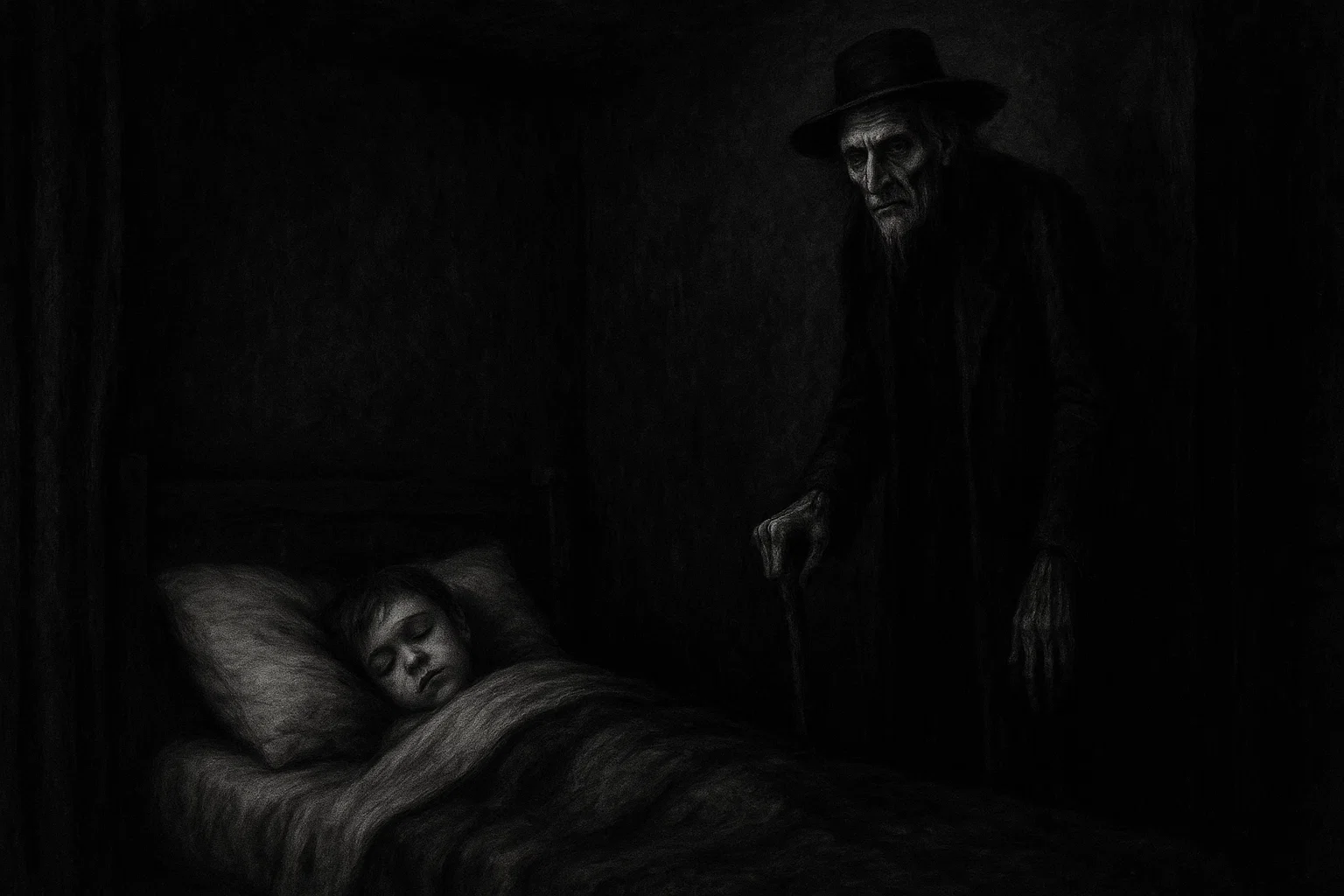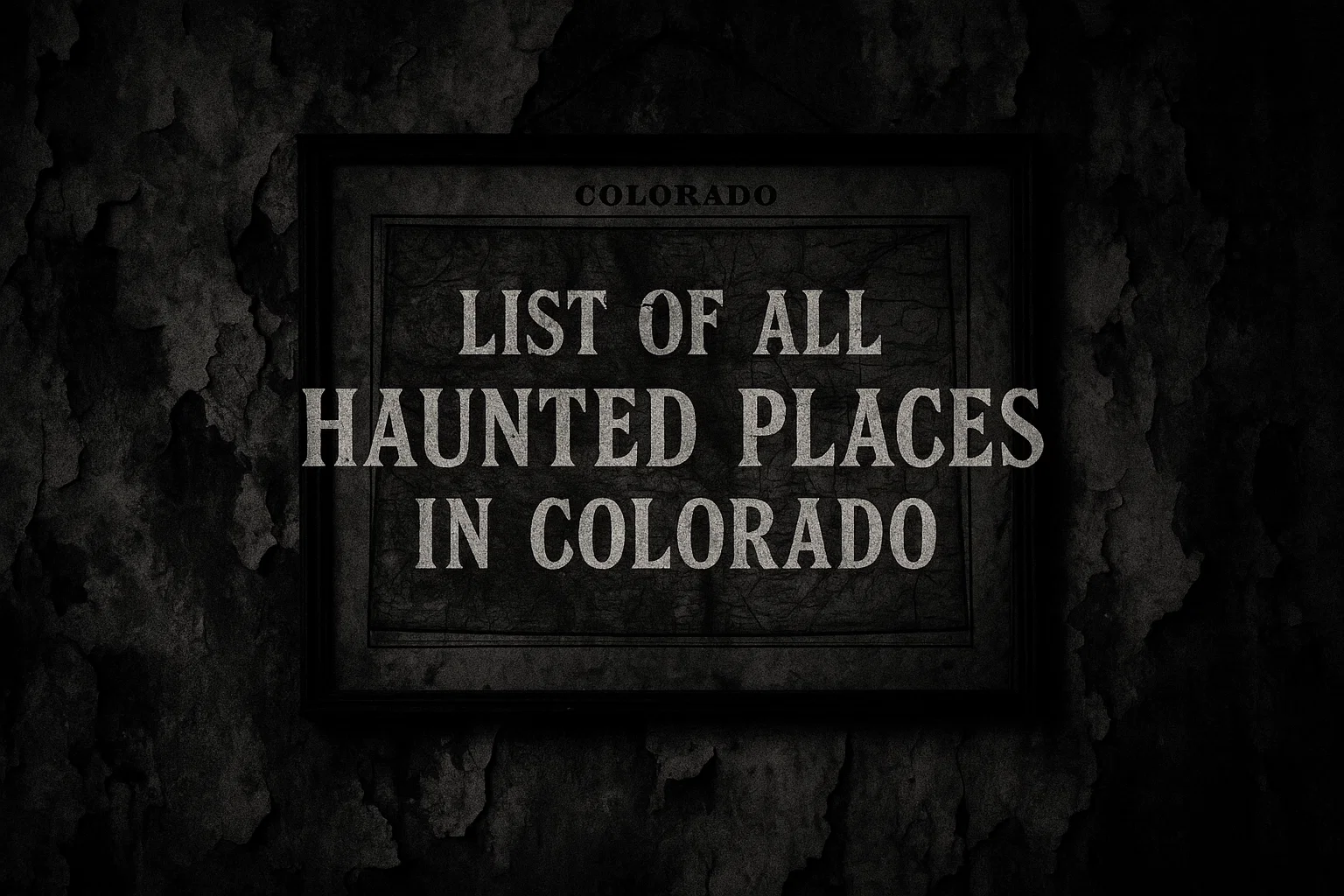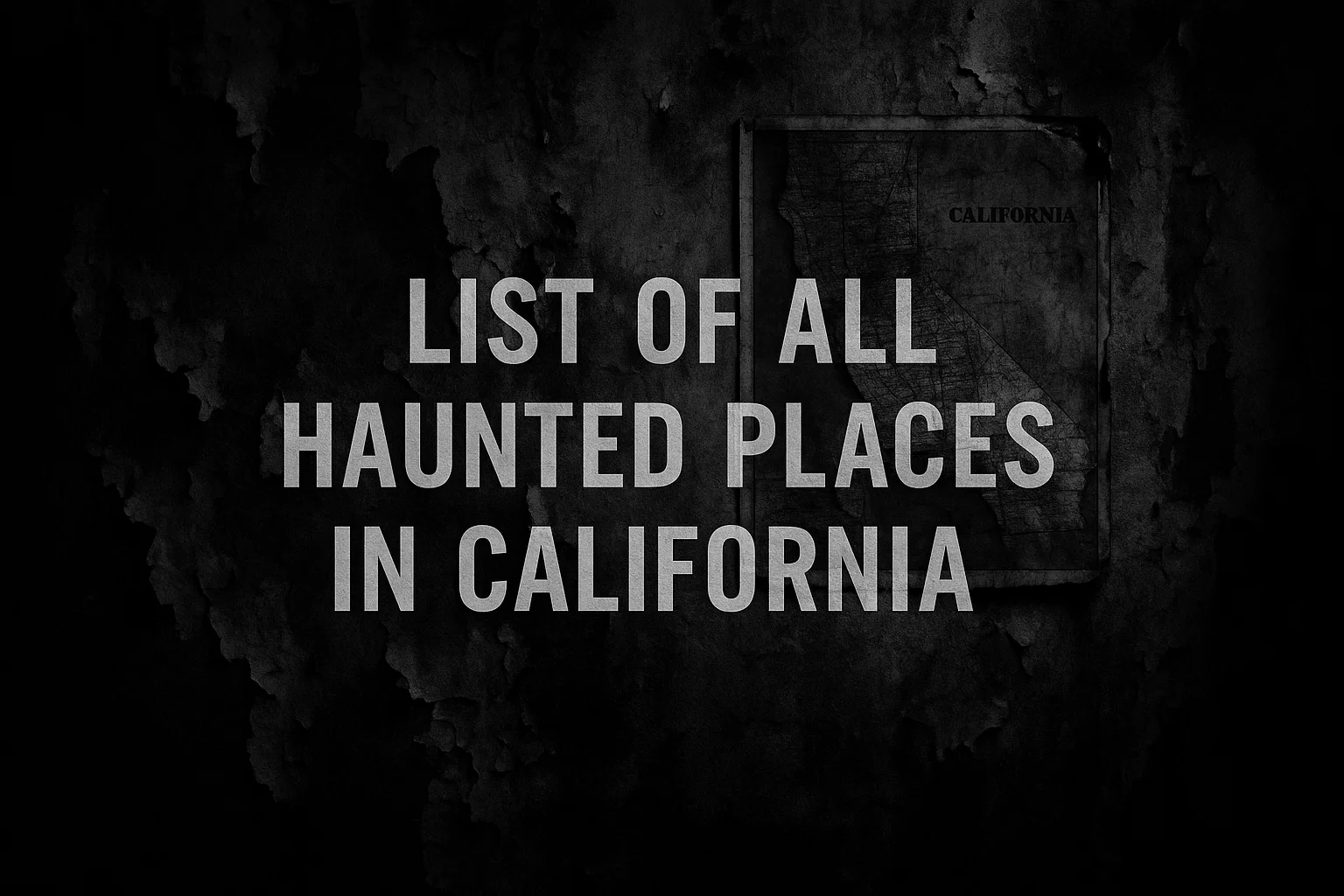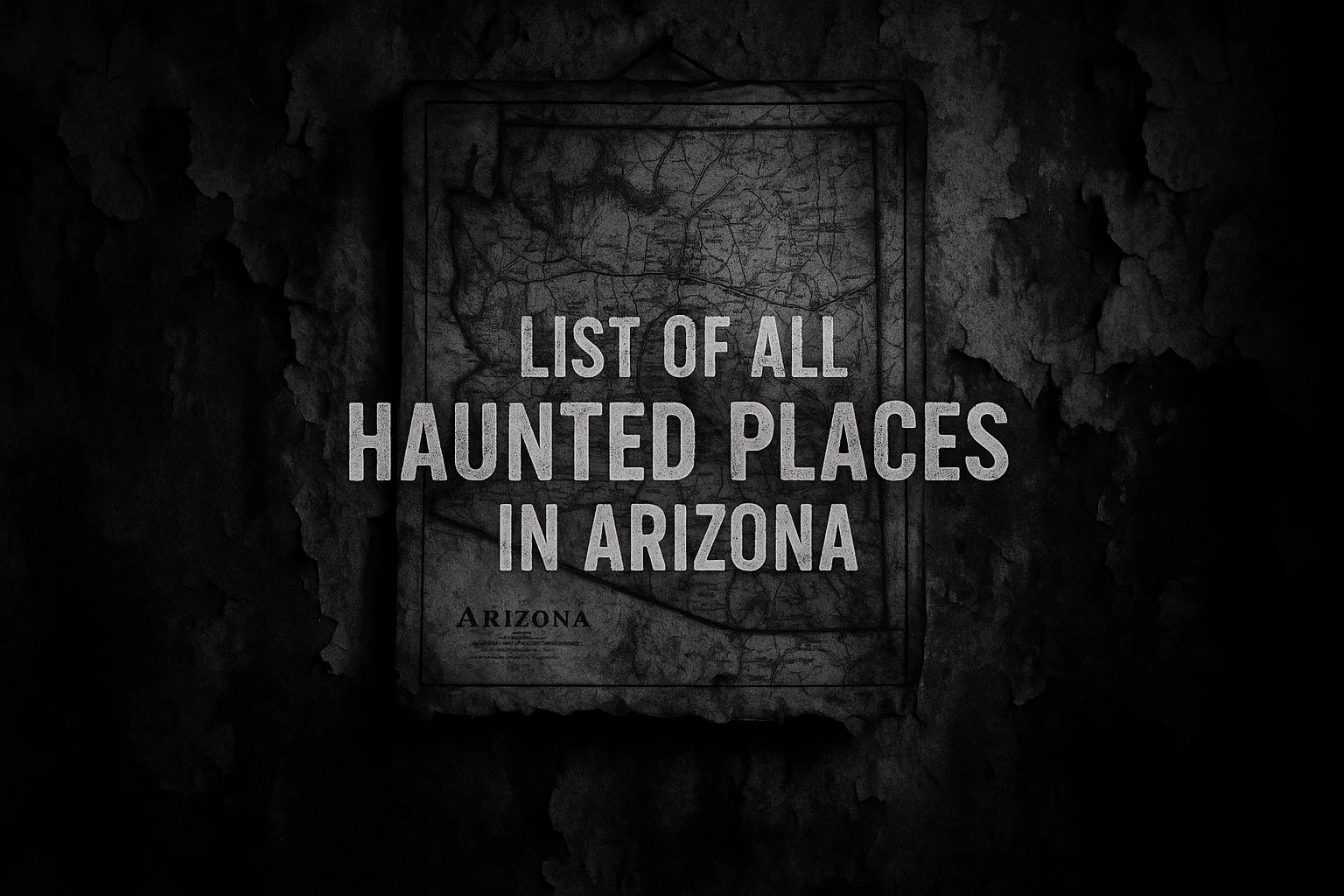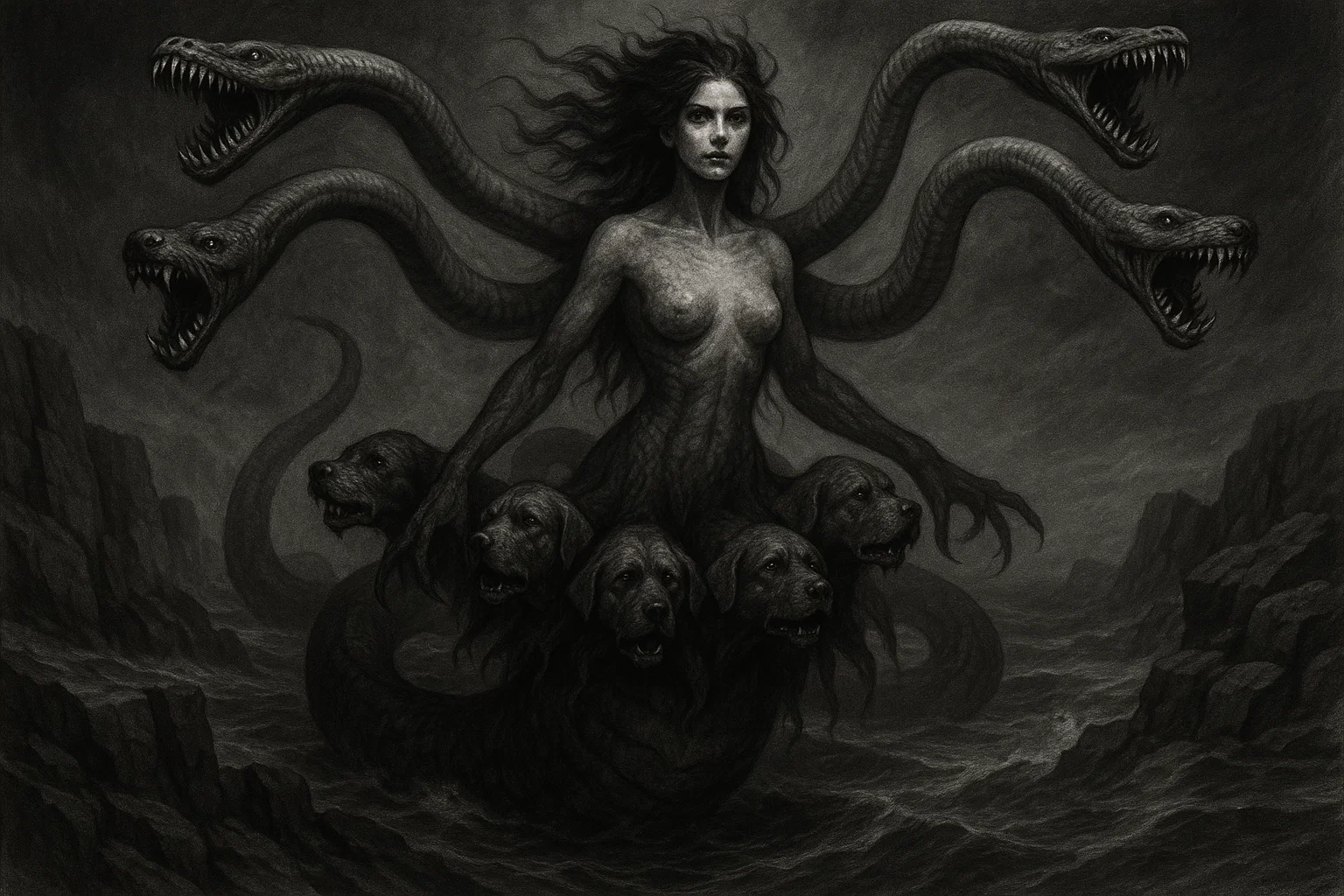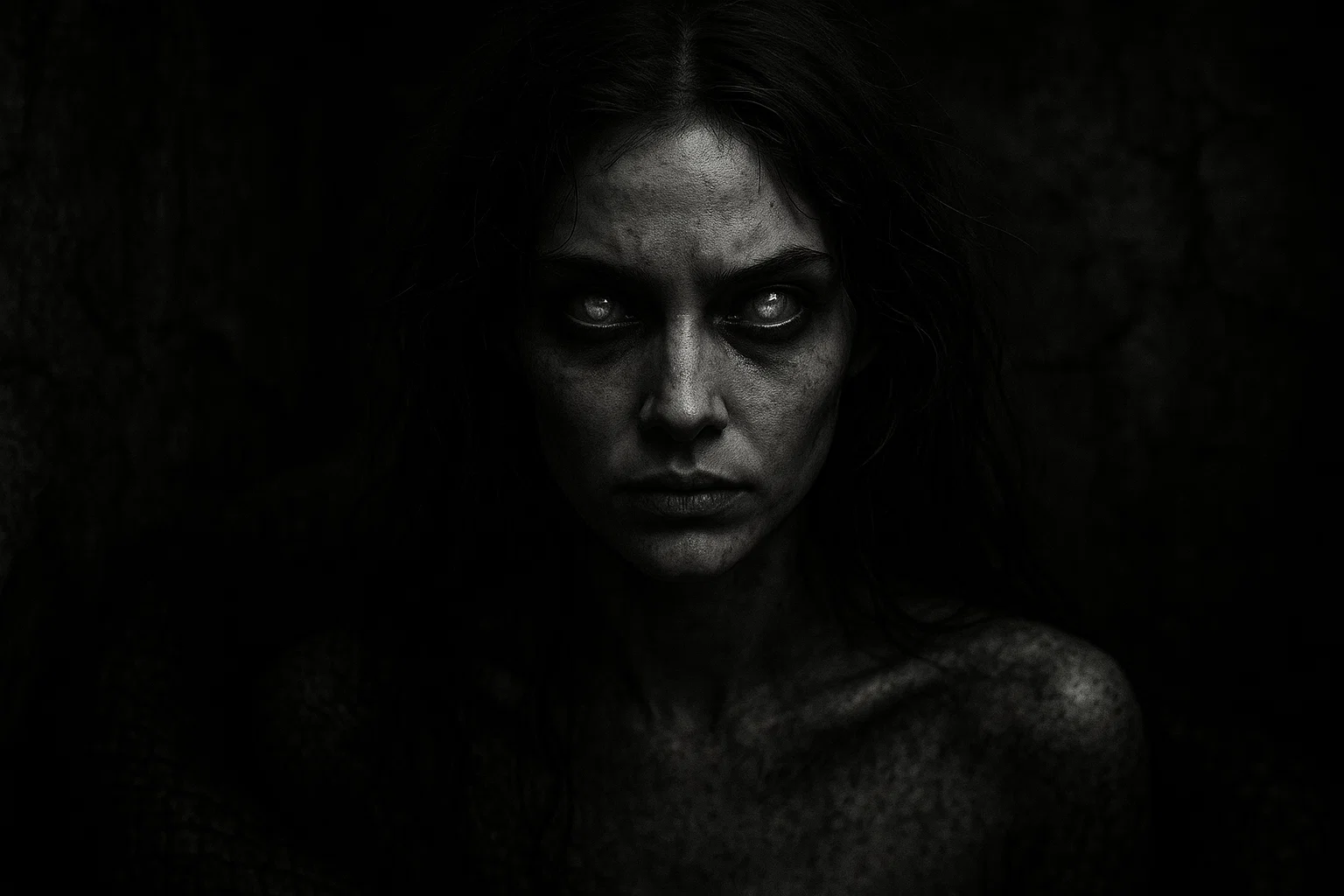The Epworth Rectory haunting, also known as the Wesley poltergeist, stands as one of the most well-documented and intriguing paranormal cases in English history.
Occurring between December 1716 and January 1717, with some activity possibly extending to March, in the small village of Epworth, Lincolnshire, England, this haunting disrupted the lives of the Wesley family, led by Reverend Samuel Wesley and his wife Susanna.
The phenomena, which included loud noises, knockings, footsteps, and physical disturbances, were attributed to a ghost nicknamed “Old Jeffrey” by one of the Wesley daughters, Hetty.
The case is notable not only for its detailed documentation through family letters but also for its connection to the Wesley family, whose sons John and Charles later founded Methodism.
Summary
Historical Background
The Setting: Epworth and the Rectory
Epworth, a small village near the River Trent in Lincolnshire, England, was the backdrop for the haunting. The Old Rectory, a Queen Anne-style brick building, was rebuilt in 1709 after a fire destroyed the previous structure on February 9, 1709.
The fire was rumored to have been arson by villagers who opposed Reverend Samuel Wesley’s strict High Church Anglicanism, though no definitive evidence supports this claim. The rebuilt rectory was a substantial structure, designed to house the rector of St Andrew’s Church and his family, reflecting permanence amid local tensions.
The village was marked by social and religious discord. Samuel Wesley’s rigid religious principles clashed with the Puritan-leaning sentiments of some parishioners, leading to disputes over tithes and other issues. This atmosphere of conflict, combined with the family’s isolation in the rectory, may have contributed to the psychological and emotional context of the haunting.
The Wesley Family
The Wesley family was central to the haunting and significant in English religious history. Reverend Samuel Wesley (1662–1735) served as the rector of St Andrew’s Church from 1695 until his death in 1735.
His wife, Susanna (1669–1742), was a devout and influential figure, often called “The Mother of Methodism” for her role in shaping her children’s religious upbringing. The couple had 19 children, though only nine survived to adulthood.
The children present during the haunting included:
- Emilia (Emily, 23): The eldest daughter, who later believed she was followed by “Old Jeffrey” throughout her life.
- Susanna (Suky, 20/21): Known for her religious devotion.
- Mary (Molly, 19/20): Another older daughter.
- Mehetabel (Hetty, 18/19): Credited with nicknaming the ghost “Old Jeffrey.”
- Anne (Nancy, 14): A younger daughter.
- Martha (Patty, 9/10): A young child.
- Kezia (6): The youngest daughter.
John Wesley (1703–1791), who later founded Methodism, was studying at Oxford University during the haunting, as was his brother Samuel Jr. (25). Charles Wesley (1707–1788), another future Methodist leader, was too young to play a significant role.
You May Also Like: 7 Reasons Moñái Might Be the Weirdest Cryptid in the World
The Haunting
The Epworth Rectory haunting began on December 1, 1716, and continued for approximately eight weeks, with some reports suggesting minor activity persisted until March 1717.
The events unfolded as follows:
- December 1, 1716: Servants Robert Brown and a housemaid first heard eerie groans and mysterious knockings in the dining room, initially dismissed as trivial.
- Early December 1716: The younger girls, including Hetty, Nancy, Patty, and Kezia, began hearing noises, prompting concern among the family.
- Christmas Day 1716: The ghost, nicknamed “Old Jeffrey” by Hetty, made its presence known to the entire family. Susanna Wesley described hearing “such a noise in the room over our heads, as if several people were walking, then running up and down stairs,” causing fear that the children would be frightened.
- Late December 1716: The disturbances intensified, with loud knockings, banging, and sounds resembling crashing glass, a hand mill moving, clanking chains, and heavy boots treading. Objects were thrown, furniture moved, and beds levitated, particularly in the nursery. The younger girls reported being pinched and scratched by an unseen force.
- Early January 1717: Samuel Wesley confronted the ghost in the children’s nursery, shouting, “Thou deaf and dumb devil, why dost thou frighten these children!? Come to me, come to my study… I am a man!” The spirit responded with knocking but fell silent, marking a turning point. On another occasion, Samuel was awakened by nine loud knocks, with pauses every third stroke, followed by his door being flung open and shut with force.
- Late January 1717: The disturbances began to subside, becoming less frequent and intense.
- March 1717: The haunting ceased abruptly, with no further significant incidents reported.
The phenomena were most pronounced in specific areas of the rectory, including the nursery, attic, paper chamber (occupied by Suky and Molly), matted chamber (Emily and Nancy), and master bedroom (Samuel and Susanna).
The family also reported hearing an invisible horn blown at deafening volumes and a recurring creaking sound, likened to a saw or windmill, every night around a quarter before ten at the house’s northeast corner.
Who Was Old Jeffrey?
The identity of “Old Jeffrey” remains one of the most enigmatic aspects of the Epworth Rectory haunting. Hetty Wesley, the fourth eldest daughter, coined the nickname, possibly referencing a man who had died in the previous rectory before its destruction in 1709.
Some accounts suggest “Old Jeffrey” could have been the ghost of a former caretaker or servant who passed away shortly before the haunting, though no historical records confirm this individual’s existence or connection to the rectory.
Paranormal theories propose that “Old Jeffrey” was a poltergeist, a type of ghost known for physical disturbances, often linked to the emotional or psychological energy of a living person, typically a teenager. In this case, Hetty or other younger children may have been the focus, given their prominence in reporting physical interactions.
Modern psychic interpretations have speculated that the disturbances could reflect family tensions, such as Susanna Wesley’s reportedly unhappy marriage or Hetty’s dislike for the rectory, though these claims lack contemporary evidence.
Emily Wesley, later Mrs. Harper, believed she was followed by “that wonderful thing called by us Jeffrey” throughout her life, as noted in a letter to John Wesley 34 years later. This suggests the haunting had a profound and lasting impact on her, reinforcing the personal significance of the entity.
Despite these theories, the true identity of “Old Jeffrey” remains unknown. The lack of definitive evidence fuels ongoing speculation, making the ghost a central mystery of the Epworth Rectory haunting.
You May Also Like: Maple Hill Cemetery Haunting: Ghost Child Sightings and Eerie Legends
Family Experiences and Reactions
The Wesley family’s reactions to the haunting evolved over time. Initially, the children were terrified, with some speculating that the disturbances were caused by local witchcraft, a common belief in early 18th-century England.
The younger girls, particularly Hetty, Nancy, and Kezia, reported the most intense physical interactions, such as pinching and scratching, which heightened their fear.
Reverend Samuel Wesley was initially skeptical, suspecting the noises might be pranks by young men or even his daughters concealing lovers. However, his perspective shifted after experiencing the phenomena firsthand, including the nine loud knocks and the violent movement of his door.
His confrontations with the ghost, including his bold challenge in the nursery, reflected his determination to protect his family, though they did not immediately halt the disturbances.
Susanna Wesley, while deeply religious, approached the events with a mix of concern and pragmatism, documenting them in letters to her son Samuel Jr. She noted the intensity of the Christmas Day incident and the fear it caused among the children.
Over time, the family grew accustomed to the noises, with the youngest sister, Kezia, even pursuing them for diversion, treating “Old Jeffrey” as a curious presence. The sisters would remark, “Jeffrey is coming; it is time to go to sleep,” indicating a normalization of the supernatural within the household.
Servants, including Robert Brown, corroborated the family’s accounts, adding credibility to the reports. The haunting’s abrupt end in January 1717, possibly extending to March, coincided with news that Samuel Jr. and John Wesley were safe, which may have alleviated family stress and contributed to the cessation of activity.
Investigations and Documentation
The Epworth Rectory haunting, occurring between December 1716 and January 1717, stands as one of the most meticulously documented paranormal cases in English history, owing to the Wesley family’s detailed records and subsequent publications.
Contemporary Investigations
In the early 18th century, the concept of formal paranormal investigations did not exist, and the Wesley family’s efforts to understand the disturbances were informal but thorough for the time.
Reverend Samuel Wesley, the rector of St Andrew’s Church in Epworth, took a proactive approach to investigate the phenomena. Initially skeptical, he suspected the noises—first reported by servants on December 1, 1716—might be caused by natural factors or pranks.
Samuel conducted multiple searches of the rectory, examining the attic, nursery, and other areas where the disturbances were most frequent, but found no evidence of intruders, animals, or structural issues that could explain the loud knockings, footsteps, or object movements.
As the phenomena escalated, Samuel’s investigations took a more confrontational turn. On several occasions, he directly addressed the entity, particularly in the children’s nursery, where the disturbances were most intense. In one notable incident in early January 1717, he shouted, “Thou deaf and dumb devil, why dost thou frighten these children!? Come to me, come to my study… I am a man!”
The spirit responded with knocking but did not cease, indicating that Samuel’s attempts to expel it were ineffective. He also attempted a form of exorcism, commanding the entity to leave, but this too had no immediate impact.
Local clergy and neighbors were aware of the disturbances, and some visited the rectory to witness the phenomena, though no formal inquiry was conducted, reflecting the era’s limited framework for investigating supernatural events.
Susanna Wesley, while not leading investigations, contributed to the family’s efforts by observing and recording the events. She noted specific patterns, such as the recurring creaking sound at the northeast corner of the house every night around a quarter before ten, which she likened to a saw or windmill.
Her observations, combined with Samuel’s searches, suggest a systematic attempt to understand the phenomena, even if no conclusive explanation was found at the time.
You May Also Like: The Cursed Phone Numbers | Horror Story
Family Documentation
The cornerstone of the Epworth Rectory haunting’s documentation lies in the letters written by the Wesley family during the period of the disturbances.
These letters, primarily addressed to Samuel Wesley Jr., who was studying in London, and John Wesley, who was at Oxford University, provide firsthand accounts of the events from multiple perspectives.
Susanna Wesley and her daughters—Emilia, Susanna (Suky), Mary (Molly), Mehetabel (Hetty), Anne (Nancy), Martha (Patty), and Kezia—wrote detailed descriptions of the phenomena, ensuring a comprehensive record.
Susanna’s letters to Samuel Jr. are particularly significant, as they capture the progression of the haunting. In a letter dated January 1717, she described the Christmas Day 1716 incident, noting, “there was such a noise in the room over our heads, as if several people were walking, then running up and down stairs that we thought the children would be frightened.”
She also documented the escalation of the disturbances, including the sounds of crashing glass, clanking chains, and heavy boots, as well as physical interactions like the pinching of the younger girls. These letters reveal the family’s initial skepticism, growing fear, and eventual acceptance of the phenomena as supernatural.
The daughters’ letters to John Wesley further enrich the documentation. Hetty, who nicknamed the ghost “Old Jeffrey,” wrote about specific incidents, such as the levitation of beds in the nursery and the sensation of being pinched by an invisible force.
Emilia, in a letter written years later to John, reflected on the haunting’s lasting impact, stating she believed “that wonderful thing called by us Jeffrey” followed her throughout her life. These accounts are consistent across family members, lending credibility to the reports.
Servants, including Robert Brown, also contributed to the documentation by corroborating the family’s experiences, with Brown reporting the initial groans heard in the dining room on December 1, 1716.
Samuel Wesley maintained a diary during the haunting, though it survives only in excerpts quoted by John Wesley and later historians. In his diary, Samuel recorded specific events, such as the nine loud knocks he heard in early January 1717, with pauses every third stroke, followed by his door being flung open and shut with force.
The letters and diary excerpts were preserved by the family and later housed in archives, including those of the Methodist Church and academic institutions like the John Rylands Library at the University of Manchester.
Their survival has allowed researchers to access primary sources, making the Epworth Rectory haunting one of the most well-documented paranormal cases of its time.
Later Publications and Analyses
The Epworth Rectory haunting’s documentation was further expanded by later publications and historical analyses. One of the most significant is Adam Clarke’s Memoirs of the Wesley Family, first published in 1823.
Clarke, a prominent Methodist theologian, devoted forty-six pages to the haunting, quoting extensively from the family’s letters and Samuel’s diary excerpts.
His work provides a broader context for the events, exploring the Wesley family’s religious beliefs and the social tensions in Epworth that may have influenced their interpretation of the phenomena. Clarke’s detailed treatment reinforces the case’s credibility, as it draws on primary sources and corroborates John Wesley’s account.
Other notable figures, such as Dr. Joseph Priestley and Robert Southey, also wrote about the haunting. Priestley, a scientist and theologian, provided particulars of the case in his writings, while Southey, in his Life of Wesley (1820), reproduced the accounts, noting, “The testimony upon which it rests is far too strong to be set aside because of the strangeness of the relation.”
You May Also Like: Photographs from Another World | Horror Story
Theories and Explanations
The Epworth Rectory haunting has been interpreted through both paranormal and rational lenses, with no definitive explanation resolving the debate.
Paranormal Perspectives
Poltergeist Activity: Many researchers classify the haunting as a classic poltergeist case, characterized by physical disturbances centered around a living “agent.” The younger children, particularly Hetty, may have been the focus, possibly due to emotional or psychological stress, a common trait in poltergeist phenomena.
Spirit of a Deceased Person: Some theories propose that “Old Jeffrey” was the ghost of a deceased individual, such as a former caretaker or resident of the previous rectory. The suggestion that the name derived from a man who died in the earlier structure supports this idea, though no evidence confirms it.
Portent or Omen: In the religious context of the time, some family members interpreted the haunting as a warning or divine sign, possibly related to Samuel Wesley’s health or the family’s future challenges.
Rational Explanations
Natural Causes: Skeptics suggest that the noises could have resulted from structural issues in the newly built rectory, such as creaking floorboards, settling foundations, or wind. Animal activity, such as rats or birds in the attic, could also explain some sounds.
Psychological Factors: The concept of mass hysteria or collective suggestion has been proposed, where the family’s fear, religious intensity, and social isolation amplified minor disturbances into a perceived supernatural event. The stress of living in a hostile community may have contributed to this dynamic.
Prank-Playing: Some speculate that the children, particularly the older daughters, might have staged some events to scare their siblings or gain attention. However, the consistency of reports across multiple witnesses, including adults and servants, makes this less likely.
Modern Analysis
Modern paranormal researchers view the Epworth case as a foundational example due to its detailed documentation and historical significance. The consistency of the family’s accounts, corroborated by servants, lends credibility to the paranormal interpretation, though the lack of physical evidence limits definitive conclusions.
Skeptics argue that the historical context and absence of modern investigative tools make it difficult to verify the phenomena, favoring natural or psychological explanations. The debate continues, with the case serving as a touchstone for discussions about poltergeist activity and the supernatural.
You May Also Like: Who Is the Demon Berith, Lord of Lies and Master of Deception?
Comparison with Other Hauntings
The Epworth Rectory haunting shares similarities with other poltergeist cases, such as the Enfield Poltergeist and the Bell Witch, but its early date and detailed documentation set it apart.
Below is a comprehensive comparison table of similar hauntings, highlighting key aspects and contextualizing the Epworth case:
| Case Name | Location | Time Period | Main Subjects | Reported Phenomena | Witnesses/Investigators | Outcome/Theories |
|---|---|---|---|---|---|---|
| Enfield Poltergeist | Enfield, London, England | 1977–1979 | Hodgson family (Janet, Margaret) | Disembodied voices, noises, thrown toys, levitation | Over 30, including police, investigators (Grosse, Playfair) | Mixed; some believe genuine, others suspect hoax |
| Thornton Heath (1938) | Thornton Heath, London, England | 1938 | Mrs. Forbes | Dishes floating, glasses flying, apparitions | Nandor Fodor | Determined fraudulent; “poltergeist psychosis” |
| Rosenheim Poltergeist | Rosenheim, Bavaria, Germany | 1967–1968 | Annemarie Schaberl | Electrical disturbances, furniture moving, phone calls | Hans Bender, physicists | Alleged telekinesis; ceased when Schaberl left |
| Borley Rectory | Borley, Essex, England | 1920s–1930s | Various residents | Apparitions, objects moving, fires | Harry Price, SPR | Mixed; Price claimed haunted, SPR found faked/natural causes |
| Bell Witch | Tennessee, USA | 1817–1821 | Bell family | Physical/verbal attacks by spirit | Family, neighbors | Famous American haunting; witch or spirit |
| Amityville Horror | Amityville, New York, USA | 1975 | Lutz family | Demonic possession, objects moving | Family, investigators | Largely debunked as hoax; tied to DeFeo murders |
| Tedworth Drummer | Tedworth, England | 1661 | John Mompesson | Drumming noises, objects moving | Family, Joseph Glanvill | Classic poltergeist; investigated by Glanvill |
| Columbus Poltergeist | Columbus, Georgia, USA | 1984 | Tina Resch | Objects moving, phone calls | James Randi, media | Accused of faking; discredited |
| Herrmann House | Seaford, Long Island, USA | 1958 | Herrmann family | Objects moving, fires | J.B. Rhine | Inspired Poltergeist movie; some skepticism |
| South Shields Poltergeist | South Shields, England | 2015 | Sunderland family | Physical attacks, objects moving | Paranormal teams | Controversial; likely hoax |
| Pontefract Poltergeist | Pontefract, England | 1966 | Pritchard family | Physical attacks, objects moving | Parapsychologists | Some evidence of hoax |
| Esther Cox’s Poltergeist | Amherst, Nova Scotia, Canada | 1878 | Esther Cox | Objects moving, fires, physical attacks | Walter Hubbell | Some evidence of fraud |
Conclusion
The Epworth Rectory haunting remains a compelling and multifaceted case, blending historical, religious, and paranormal elements. Its detailed documentation through family letters, combined with its connection to the Wesley family, ensures its place as a foundational case in paranormal research.
While theories about “Old Jeffrey” and the causes of the disturbances—ranging from poltergeist activity to natural or psychological explanations—continue to spark debate, the haunting’s impact on the Wesley family and its cultural legacy is undeniable.
The Epworth Rectory haunting continues to captivate, inviting exploration of the unknown and the interplay between faith, fear, and the unexplained.

